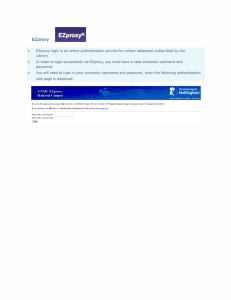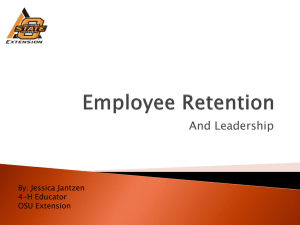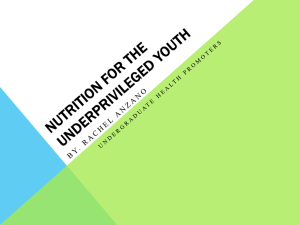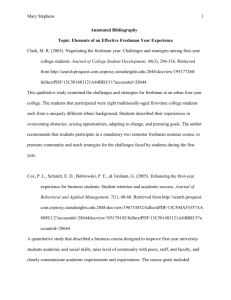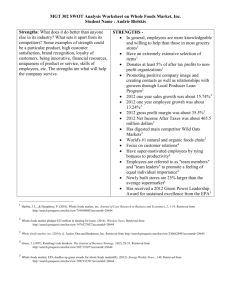Interactive Videoconferencing for Lynn Elementary
advertisement
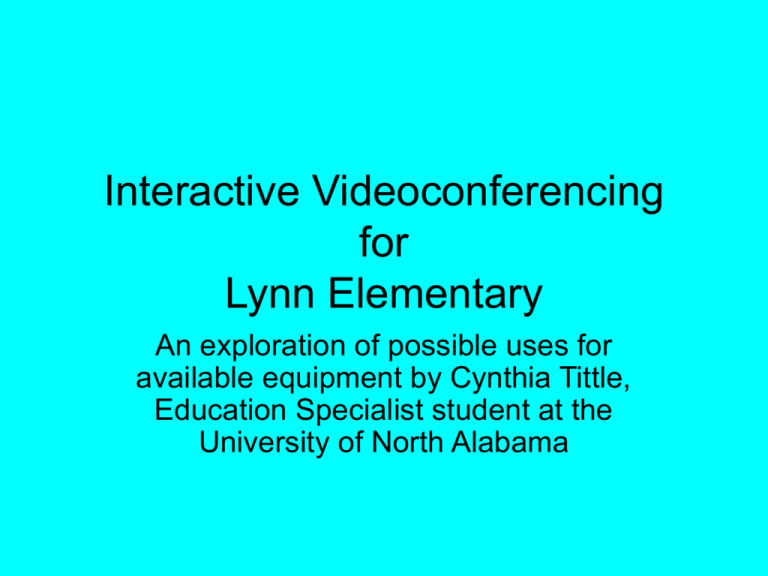
Interactive Videoconferencing for Lynn Elementary An exploration of possible uses for available equipment by Cynthia Tittle, Education Specialist student at the University of North Alabama Terms to Know • IVC – interactive videoconferencing equipment • NASA – National Aeronautics and Space Administration • CILC – Center for Interactive Learning and Collaboration Research on uses of Interactive Videoconferening for learning • Most research with adult learners Preservice teachers (Plonczak, 2010 and Bello, Knowlton, & Chaffin, 2007) Nursing students (MacIntosh, 2001 and Zerr & Pulcher, 2008) College political science course (Box-Steffensmeir, Grant, Meinke, & Tomlinson, 2000) College informational technology course (Stafford & Lindsey, 2007) Rural health care providers (Malay & Moore, 2002) • World-wide studies University of New England/Australia music studies (Smyth & Zanetis, 2007) Botswana and New Zealand multicultural studies (Kumar & Bhattacharya, 2007) Library studies in Northern Ireland (Martin, 2005) • Benefits Saves time, provides enriching experience, relieves some anxiety, promotes problem-solving skills and communication skills, provides resources that are limited to some areas, unlimited content possibilities • Barriers Technology glitches, facilitator’s questioning skills and preparation, students’ prior knowledge and motivation to interact, reflective activities • Future Individual conferences via iPhone? Hands on activities at a cost? Internet pen pals? Survey of Needs and Attitudes Utilized to identify needs at Lynn Elementary School • How difficult do you feel the IVC equipment is to operate? • What are some things that are barriers to using the IVC equipment for your classroom? • What are some ways that you think the IVC could be used if these barriers no longer exited? • Where do you think we could get ideas for using the IVC equipment? • What learning objectives/subjects do you think the IVC equipment could easily incorporate? Documentation of Use of Multipurpose Lab (Location of IVC at LES) • Time-line: August, 2011 through February, 2012 • Grades 4 – 7, Gifted, and Special Education Classes regularly used lab • One third grade teacher occasionally • Used for testing, research, educational websites on laptops or desktops • No recorded IVC use before March, 2012 This Project Goals related to needs survey • Eliminate barriers Provide knowledge and experience with equipment Create time for planning and scheduling Do not schedule out of class time Eliminate cost by searching for “free” visits • Explore possible uses Connect to concepts taught Identify enriching experiences Virtual Field Trips Guest speakers Professional Development/System-wide meetings This Project - continued • Identify resources for locating IVC ideas Internet Co-workers/colleagues System Webmaster/Technology Department System-wide Blog to share experiences • Align activities with learning objectives NASA CILC International Studies ALEX, textbooks Post Implementation of IVC Activities • Teacher and student surveys Results were overall fairly positive with exceptions of technical difficulties due to connections. These problems are better since a more broad band connections has been installed by TDS. • Experiences related to research LES experiences were in line with research found. Disadvantages related to technical difficulties. Advantages: interact with an expert, facilitator motivated students to interact, it was fun! • Future implications Experienced colleague now available Practice registering for IVC activity Plan for 2012-2013 School Year Investigate use of electronic calendar such as Google Continue use of Virtual Field Trips Blog Winston County Virtual Field Trip Blog Final Thoughts • Response from Asian-American student (International student who visited Lynn Elementary via IVC) • Student drawings (From CILC activity) • Video of kids sharing knock-knock jokes (Within system visit involving class with transferred students) • Tips for planning CILC activity • NASA registration is easy – check with your librarian, Mrs. Tittle has set up accounts for all LES faculty • Questions/comments Resources Bello, A., Knowlton, E., & Chaffin, J. (2007). Interactive videoconferencing as a medium for special education: Knowledge acquisition in preservice teacher education. Intervention in School and Clinic, 43(1), 38-48. Retrieved from https://ezproxy.una.edu/login?url=http://ezproxy.una.edu:2702/docview/211739322?accountid=14668. Box-Steffensmeier, J. M., Grant, J. T., Meinke, S. R., & Tomlinson, A. R. (2000). Virtual field trips: Bringing college students and policymakers together through interactive technology. PS, Political Science & Politics, 33(4), 829-834. Retrieved from https://ezproxy.una.edu/login?url=http://search.proquest.com/docview/224956613?accountid=14668. Hannum, W. H., Irvin, M. J., Banks, J. B., & Farmer, T. W. (2009). Distance education use in rural schools. Journal of Research in Rural Education, 24(3), 1-15. Retrieved from https://ezproxy.una.edu/login?url=http://search.proquest.com/docview/61885980?accountid=14668; http://jrre.psu.edu/articles/24-3.pdf. Kumar, K.L. & Bhattacharya, M. (2007). Designing for learning effectiveness across borders in a multicultural context. Journal of Interactive Learning Research, 18(1), 111-121. Retrieved from https://ezproxy.una.edu/login?url=http://search.proquest.com/docview/211249703?accountid=14668. MacIntosh, J. (2001). Learner concerns and teaching strategies for video-conferencing. The Journal of Continuing Education in Nursing, 32(6), 260-265. Retrieved from https://ezproxy.una.edu/login?url=http://search.proquest.com/docview/223327769?accountid=14668. Malay, M. C., MS, RN, CEN, CCRN, & Moore, J. F., PhD., R.N. (2002). Ruralurban partnering in continuing education. The Journal of Continuing Education in Nursing, 33(2), 60-62. Retrieved from https://ezproxy.una.edu/login?url=http://search.proquest.com/docview/223321809?accountid=14668. Martin, M. (2005). Seeing is believing: The role of videoconferencing in distance learning. British Journal of Educational Technology, 36(3), 397-405. doi:10.1111/j.1467-8535.2005.00471.x. Resources continued Merrick, S. (2005). Videoconferencing K-12: The state of the art. Innovate: Journal of Online Education, 2(1), 7. Retrieved from https://ezproxy.una.edu/login?url=http://search.proquest.com/docview/61839530?accountid=14668; http://www.innovateonline.info/index.php?view=article&id=24. Plonczak, I. (2010). Videoconferencing in math and science preservice elementary field placements. Journal of Science Teacher Education, 21(2), 241-254. Retrieved from https://ezproxy.una.edu/login?url=http://search.proquest.com/docview/742871558?accountid=14668; http://dx.doi.org/10.1007/s10972-009-9166-3. Smyth, R., & Zanetis, J. (2007). Internet-based videoconferencing for teaching and learning: A cinderella story. Distance Learning, 4(2), 61-70. Retrieved from https://ezproxy.una.edu/login?url=http://search.proquest.com/docview/230716420?accountid=14668. Stafford, T. F., & Lindsey, K. L. (2007). IP teleconferencing in the wired classroom: Gratifications for distance education. Journal of Information Systems Education, 18(2), 227-232. Retrieved from https://ezproxy.una.edu/login?url=http://search.proquest.com/docview/61892484?accountid=14668; http://www.jise.appstate.edu/Issues/18/V18N3p227-abs.pdf. Videoconferencing deserves a second look [Wire side chat]. Education World. Retrieved from http://www.educationworld.com/a_issues/chat/chat127-2.shtml. Zerr, D. M., M.S.N., R.N., & Pulcher, K. L., M.S.N., A.R.N.P./C.P.N.P. (2008). Using interactive video technology in nursing education: A pilot study. Journal of Nursing Education, 47(2), 87-91. Retrieved from https://ezproxy.una.edu/login?url=http://search.proquest.com/docview/203945977?accountid=14668. CILC Field Trip Go to CILC website http://cilc.org/ • • • • • • • • • • • Select “Catalog” tab. Select under “Technology Type” – IP Select under “Provider” – leave “all” to search all We used International Studies for Students Select under “Event Cost” – Free Select under “Types of Content Offerings” – Educational Programs Select under “Details” the details you would like to have displayed on the information pages. Click “next.” Then, select the discipline, grade level, etc. you wish to match with your trip. Click “next.” Then, select more details to be displayed on your customized catalog. A list of optional activities to choose from will appear. This may be printed. NASA Field Trip Go to NASA site http://www.nasa.gov/offices/education/pro grams/national/dln/index.html Browse Event Catalog Check for “free” and beware of professional development events in “free” list To register you must have an account. You can set up your own, but, check with your librarian. You may already have an account. All LES faculty have accounts set up. When registering, a calendar will show available dates. You will receive an email approving your registration and giving you instructions to confirm. Always print out the email. It contains IP number to call, contact information, pre-trip and post-trip activities, etc. Tips for Successful IVC Trip • Preview the event information. Copy student pages needed for the event. Prepare students for the trip. • This is a live event. • The speaker should be treated with the same respect as a speaker in your classroom. Students should raise their hands to speak or ask a question, except when otherwise instructed. Sometimes the facilitator will ask the teacher to call on a student to respond or the class may be asked to give a group response. • The microphone is extra sensitive. • The speaker will hear feet shuffle, pencils tap, etc. Talk to students about good listening skills. • Be in the multipurpose lab 10 minutes before the event starts. The site will be called 15 minutes before class begins. • Please complete the teacher and student After-trip Surveys and place in Mrs. Tittle’s mailbox.
